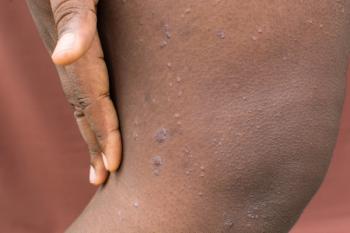
Perampanel Demonstrates Safety, Efficacy in Treatment of Children and Adolescents With Epilepsy
Perampanel, a novel antiepileptic drug, was associated with a reduction in seizure frequency of at least 50% in more than half of children and adolescents in a meta-analysis.
Perampanel was shown to be well tolerated and effective in the treatment of children and adolescents with
Characterized by researchers as the first noncompetitive α-amino-3-hydroxy-5-methyl-4-isoxazole-propionic acid (AMPA) receptor antagonist to receive regulatory approval, perampanel is currently approved in several countries for the treatment of partial epileptic seizure and primary generalized tonic-clonic epilepsy in patients 12 years and older.
“However, due to the relatively short marketing time, the efficacy, safety, and tolerability of [perampanel] in various types of epilepsy are not completely clear, and the dosage of perampanel in children and adolescents is still under exploration,” the authors noted. “There are several antiseizure drugs, involving more than 30 different molecular targets, but still, about a third of patients develop drug-resistant epilepsy.”
With epilepsy beginning in most patients during childhood and adolescence, the study authors conducted a systematic review and meta-analysis to further investigate the optimal dosage, efficacy, tolerability, and safety of perampanel in pediatric patients with various types of disease.
Data on patients younger than 20 years with epilepsy of any type treated with perampanel as monotherapy or add-on therapy, which were derived from clinical studies registered in the PubMed, Embase, and Cochrane Library databases up to November 2022, were eligible for inclusion.
For the analysis, the primary efficacy outcome was the number of patients with complete cessation of seizures, with the secondary outcome being the number of patients with at least a 50% reduction in the number of seizures compared with baseline. Other efficacy end points included the initial and maintenance doses of perampanel, the dose of perampanel in patients with favorable responses, and the patient’s previous use of other antiseizure drugs.
Safety was measured via adverse reactions, which included the incidence and severity of various types of adverse reactions and the incidence of withdrawal from the experiment due to adverse reactions of perampanel.
A total of 21 studies involving 1968 children and adolescent patients were included in the meta-analysis, of which one randomized controlled trial (RCT), 3 cohort studies, 16 case series studies, and 1 cross-sectional study were cited.
Findings demonstrated significant efficacy of perampanel among children and adolescents, with the drug reported to be generally well tolerated as well:
- Primary efficacy outcome: Complete seizure cessation occurred in 20.6% (n = 417) of patients (95% CI, 16.7%-25.4%).
- Secondary outcomes: A reduction in seizure frequency of at least 50% was demonstrated in 51.5% (95% CI, 47.1%-55.9%) of patients (n = 1036).
- Safety outcomes: Incidence of adverse events was 40.8% (95% CI, 33.8%-48.2%) and the incidence of drug discontinuation due to adverse events was 9.2% (95% CI, 7.0%-11.5%). The most common adverse events cited were drowsiness (15.3%; 95% CI, 13.7%-16.9%), irritability (9.3%; 95% CI, 8.0%-10.6%), and dizziness (8.4%; 95% CI, 7.2%-9.7%)
Researchers acknowledged that as only 1 RCT study was included in the meta-analysis, and the other 13 studies had no control group and most of them were retrospective studies, findings may have lower reliability. The lack of included literature was also cited as a limitation of the study findings as they could not examine the effect of perampanel on each type of epilepsy separately.
“The use of perampanel in children and adolescents with epilepsy can significantly reduce the frequency of seizures, and it is well tolerated. It can be used as an add-on or second-line treatment for children and adolescents with epilepsy who are poorly controlled by other anti-seizure drugs,” the study authors concluded. “Large-scale randomized controlled trials are needed to continue to explore the efficacy and safety of perampanel.”
Reference
Sun S, Li X, Liu X. Efficacy, tolerability and safety of perampanel in children and adolescents with epilepsy: dystematic review and meta-analysis. Brain Dev. Published online March 4, 2023. doi:10.1016/j.braindev.2023.02.007
Newsletter
Stay ahead of policy, cost, and value—subscribe to AJMC for expert insights at the intersection of clinical care and health economics.








































